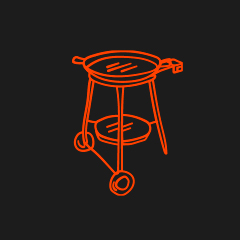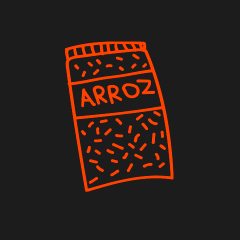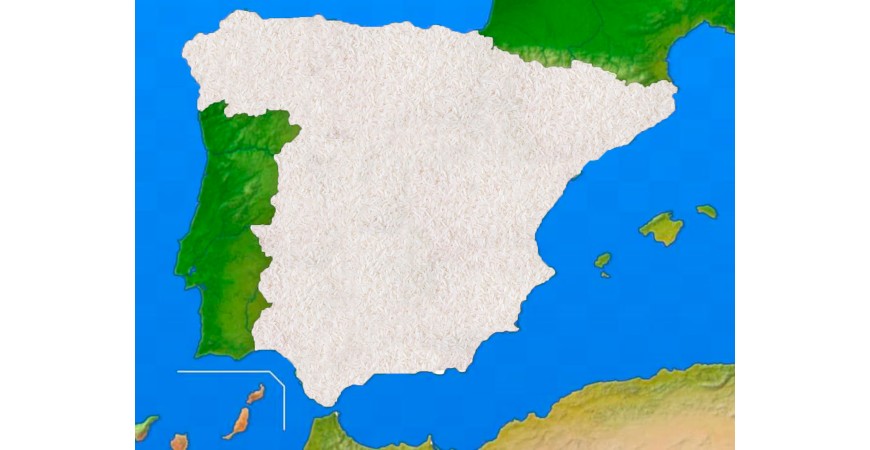Rice Route of the Valencian Community
Route of Rice and Paellas
Valencia, the birthplace of paella, can proudly claim that its recipe, originating from the Valencian fields, has led to the creation of hundreds of different paellas both within its territory and beyond.
From adding new ingredients to the original dish, combining traditional ingredients to create new recipes, to the most innovative attempts to discover unprecedented flavor combinations using the paella preparation technique, there are many ways to seek out a new rice recipe.
During this culinary quest, many paella and rice recipes have, over the years, become traditional rice dishes typical of Spanish towns and cities. Perhaps due to their unique ingredients, being served during celebrations and popular festivals, or simply as a part of daily life, it is rare to find a town or city in Spain without a rice dish that its inhabitants call their own.
As Valencians, born in the cradle of rice, we have decided to undertake this extensive collection work with two objectives in mind: first, to gather in one place the greatest number of rice dishes and paellas found in Spain and the Valencian Community, and second, to provide a general idea of where to find these rice dishes so that rice lovers can create their own rice route to try them.
To make it easier for you to create your own rice route, we have divided the rice dishes into two zones: the Valencian Community and Spain. This is because it is easier to try the rice dishes from the cities and towns of the Valencian Community, which are closer to each other, than those found in the different cities and provinces of Spain.
Join us on this rice journey, and remember, if we haven't included any, let us know, as although we have searched through all the towns and cities of Spain, we don't want any worthy rice dish to be left out of this collection.
Route of Rice and Paellas: Valencian Community

Valencian Paella – Valencia

Starting with the classic of classics, Valencian paella originated humbly in the fields of Valencia, where farmers combined local products they could get from the fields on the paella and discovered the now traditional dish. True to its original spirit of sharing the dish with others, it is rarely missing at a party or weekend meal with friends or family.
If you are looking to try it in some restaurant in the Valencian Community, we recommend La Coloratta, winner of the 59th Edition of the International Valencian Paella Contest, Arroceria Ricepaella, which also has home delivery service, Arrosos per emportar Pepi Rodriguez, or if you want to enjoy it in El Palmar, near Albufera, the restaurant Bonaire.
The traditional Valencian paella is made with chicken and rabbit meat, green beans, garrofó beans, tomato, oil, water, sweet paprika, saffron, salt, and of course, rice.
Baked Rice in Pumpkin – Villafamés

There are many kinds of stuffed dishes: turkey, chicken, peppers, eggplants... In the town of Villafamés, in the province of Castellón, they decided to go big and stuff an entire pumpkin, turning it into a traditional dish of the town, although it can also be found today in other places of the Valencian Community.
Also known as olla de calabaza, the dish is so famous in the town that if you want to try it in some of the local restaurants, such as El Rullo or El Mesón, you must request it 24 hours in advance, being prepared with pumpkins grown in the personal gardens of the restaurants.
This baked rice is made with rice, cooked chickpeas, onion sausage, potatoes, ribs, pancetta, ear and snout, sweet paprika, saffron, a head of garlic, grated tomato, oil, salt, and meat broth.
Castellón’s Little Rice
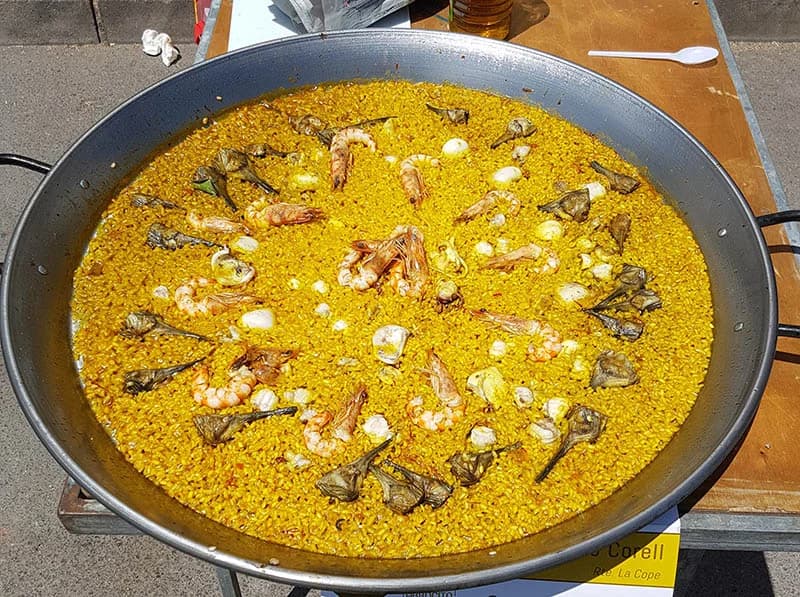
Do not be deceived by the diminutive suffix in the name of this recipe, as it is neither small in size nor flavor. A typical dish of the local cuisine of the maritime district of Castellón, it is a combination of sea and artichokes that is never missing in the local restaurants.
We recommend the restaurant Casa Lola de Castelló, winner of the 2022 International Castellón Little Rice Contest. Also noteworthy is El Chato Gastrobar, winner of the 2018 competition and located in Artana, Castellón.
This recipe makes special use of Benicarló artichokes, as well as prawns, monkfish, sepionet de la punxa, rockfish for the broth, grated tomato, garlic, onion, and rice.
Baked Rice – Xativa
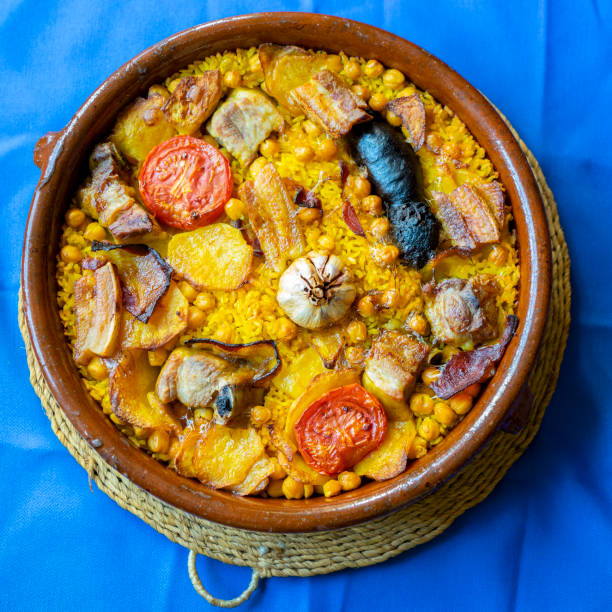
If Valencians are passionate about paella, in Xativa we can confirm that they are passionate about baked rice, where during June, an annual contest is held in the city in honor of this traditional Spanish dish.
A reference in the Costera region is Casa La Abuela, a classic of Xativa.
Popularly known as arroz passejat (walked rice), in the past, a communal oven was usually available in towns, so those who wanted to try this rice dish had to "walk" with the dish through the town, from the oven to their home and back.
Traditionally prepared in a clay pot, this rice was traditionally made with the leftovers from the puchero, another typical Spanish dish, using chickpeas and pork such as ribs, bacon, pelota, and black pudding. It also includes potatoes, tomato, and a head of garlic in the center.
Senyoret’s Rice – Betera
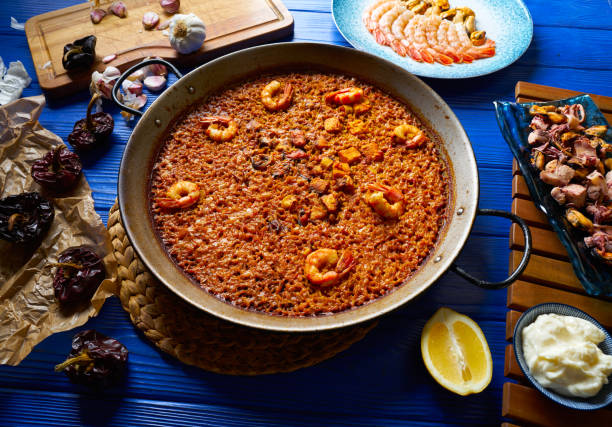
In the city of Betera, there must be many senyorets (young noblemen and women), considering the popularity of this traditional dish, which even has competitions to determine who can make the best senyoret rice.
We recommend the restaurant Rossinyol, located in Naquera and winner of the fifth edition of the senyoret rice contest. Another restaurant gaining prestige in the preparation of this local dish is El Gordo y el Flaco.
The dish itself can be described as a seafood rice, but its name comes from a unique feature: all the fish and seafood are already peeled and boned, so we don’t have to dirty our hands or use a knife to enjoy this rice dish from start to finish.
A popular legend of its origin tells that a group of young noblemen used to go to a restaurant near the coast, and one of them, nicknamed senyoret, always ordered it with the fish peeled, and his companions did the same.
Thus, this dish became known as senyoret’s rice, referring to the young high-society individuals who, to avoid getting their hands dirty, ordered the dish with the fish and seafood already peeled. Quite refined, indeed.
Rice with Swiss Chard – Lliria
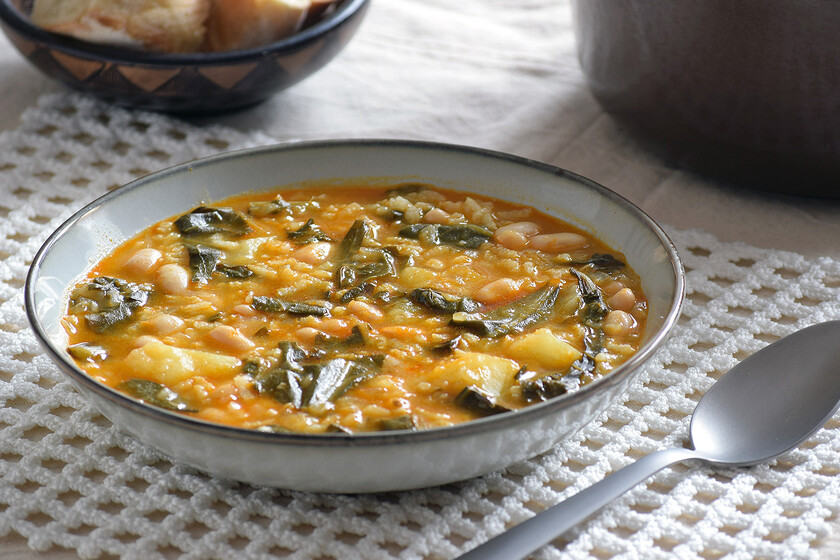
Considered by many as a traditional dish typical of our mothers or grandmothers, every adult who has grown up in Spain has surely tried this rice with Swiss chard dish at some point in their childhood and remembers its unique and singular flavor, incomparable to any other dish made by their grandmother or mother.
If you want to try something close to that grandmotherly flavor, we recommend La Taula de Lliria, recognized for winning many Valencian gastronomy competitions.
In 2006, Lliria began hosting competitions for this dish, where we are sure more than one grandmother from the city took home the first prize. After a brief pause in 2015, the competitions continue to this day.
The traditional recipe requires few ingredients to remain in the memories of thousands of Spaniards: apart from rice, we need Swiss chard, beans, grated tomato, onion, garlic, potatoes, saffron, oil, salt, and water.
In some places, snails are also included additionally, but we leave that for those who like them.
Rice with Bull’s Liver – Meliana
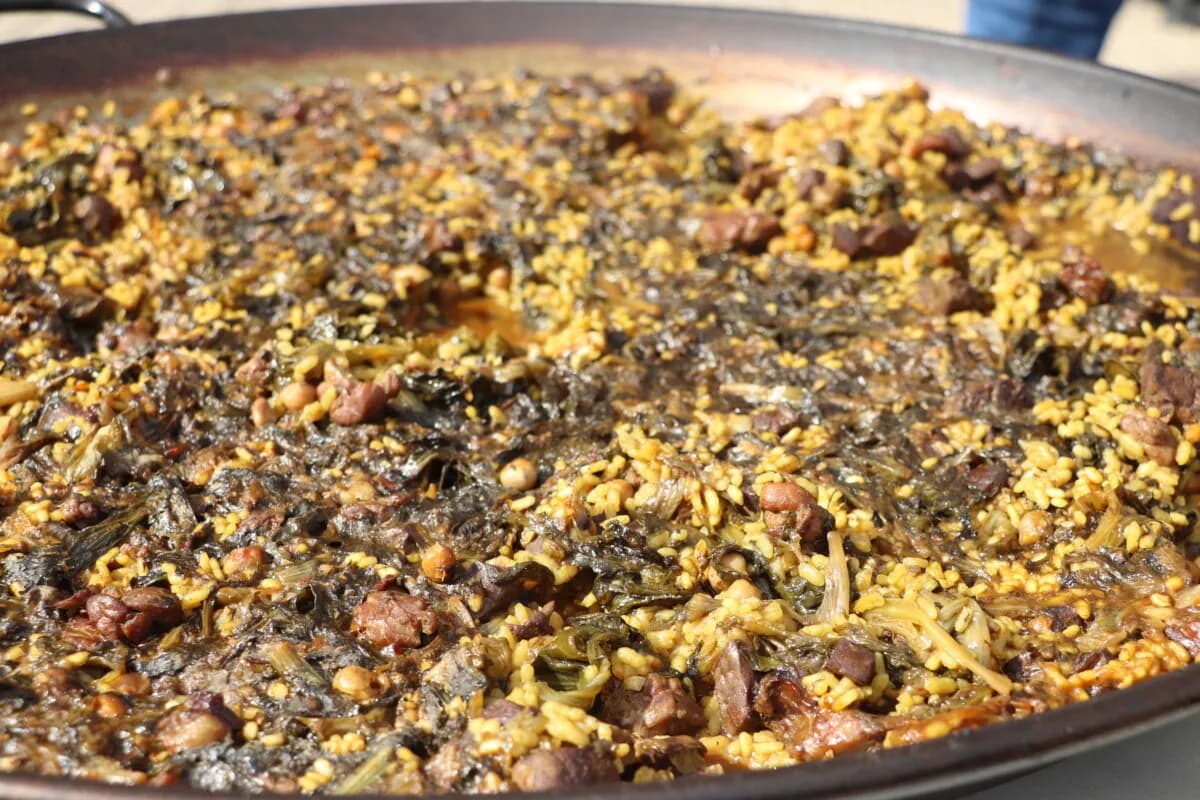
This traditional rice recipe can be found in the Huerta Norte region, which includes areas like Almassera, Borbotó, Tavernes Blanques, Meliana, Alboraya, and, where it is undoubtedly most loved, Meliana, which has been hosting competitions for the best bull’s liver rice for years and, of course, sampling it among all present.
We recommend El Famós, a centenary restaurant from a saga of seven generations located in the Valencian garden, known for having its own vegetable garden. Also noteworthy is the latest winner of the 2024 bull’s liver paella contest, Bonaire Restaurant in El Palmar, a classic in almost all variants of rice dishes in the Valencian Community, practically recognized in all contests.
The origin of this recipe goes back to using all possible ingredients available, in this case, the viscera of bulls and oxen obtained by sacrificing the animal when it could no longer help with field plowing.
Nevertheless, certain local legends suggest it was the payment in kind given to farmers for helping drag the fighting bulls that usually died in the Valencia ring.
This rice dish is undoubtedly one of the most flavorful compared to the other rice dishes we have mentioned earlier. Today, it is more common to use veal viscera due to the scarcity of those provided by the bull or ox, utilizing liver, heart, entrails, and sweetbreads, as well as escarole, chickpeas, grated tomato, garlic, sweet paprika, water, saffron, salt, and oil.
Allipebrat Rice – Sueca
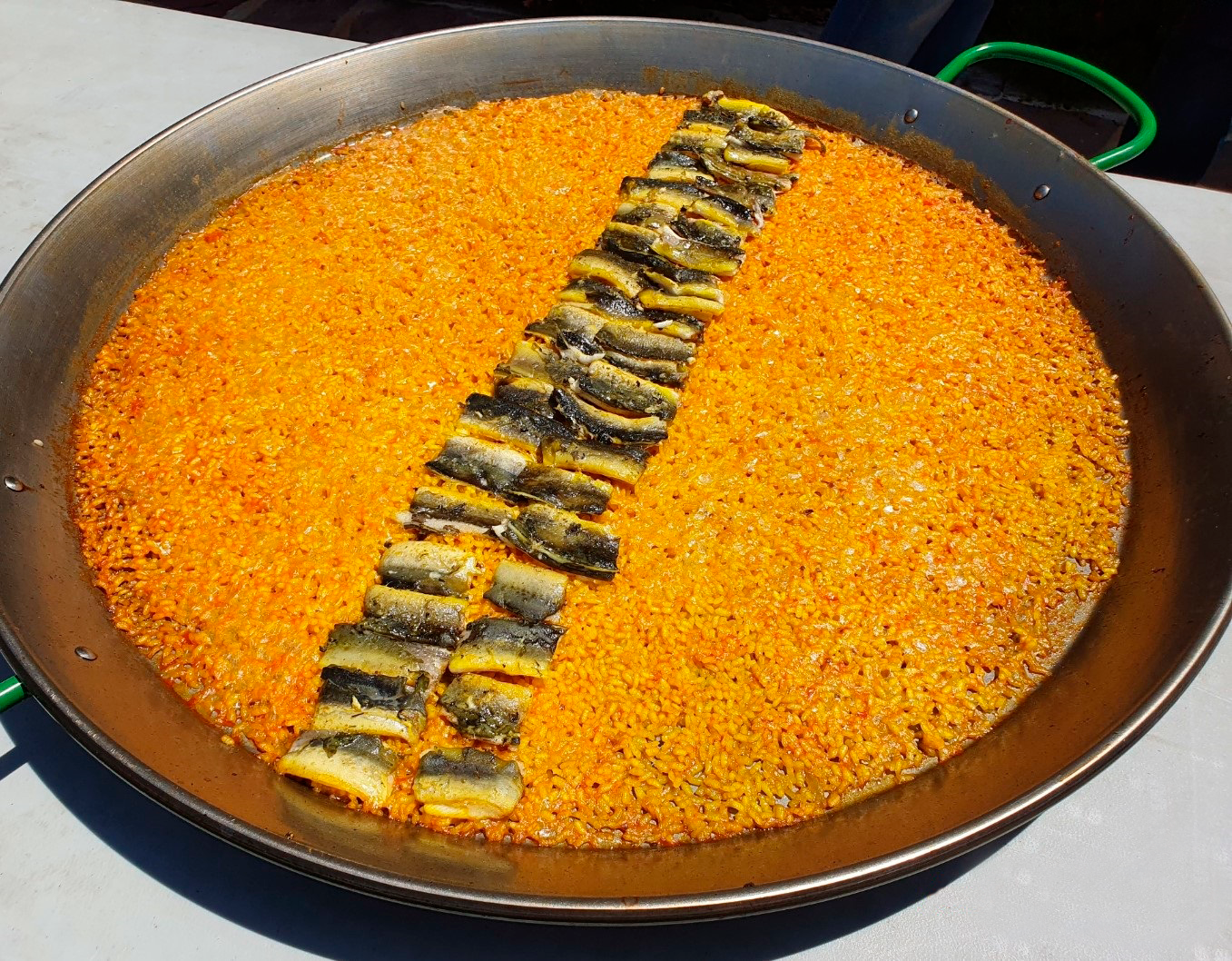
In Sueca, where the eel allipebrat rice contest has been held for many years, we can undoubtedly deduce that they have an unconditional love for this rice recipe.
We recommend El Racó de Meliana in Meliana, winner of the first prize in the first edition of the allipebrat rice contest, and Miguel y Juani Restaurant in l'Alcudia, winners of the first prize in 2016.
Both locations have managed to capture the characteristic flavor of the Albufera eels, whose fishing is so highly valued that it even has its own days to protect the ecosystem in the area.
The original recipe of this rice dish contains apart from rice, eel, potatoes, a head of garlic, oil, paprika, and salt. Some variations also include sweet paprika, cayenne pepper, and water.
Paella of cullera
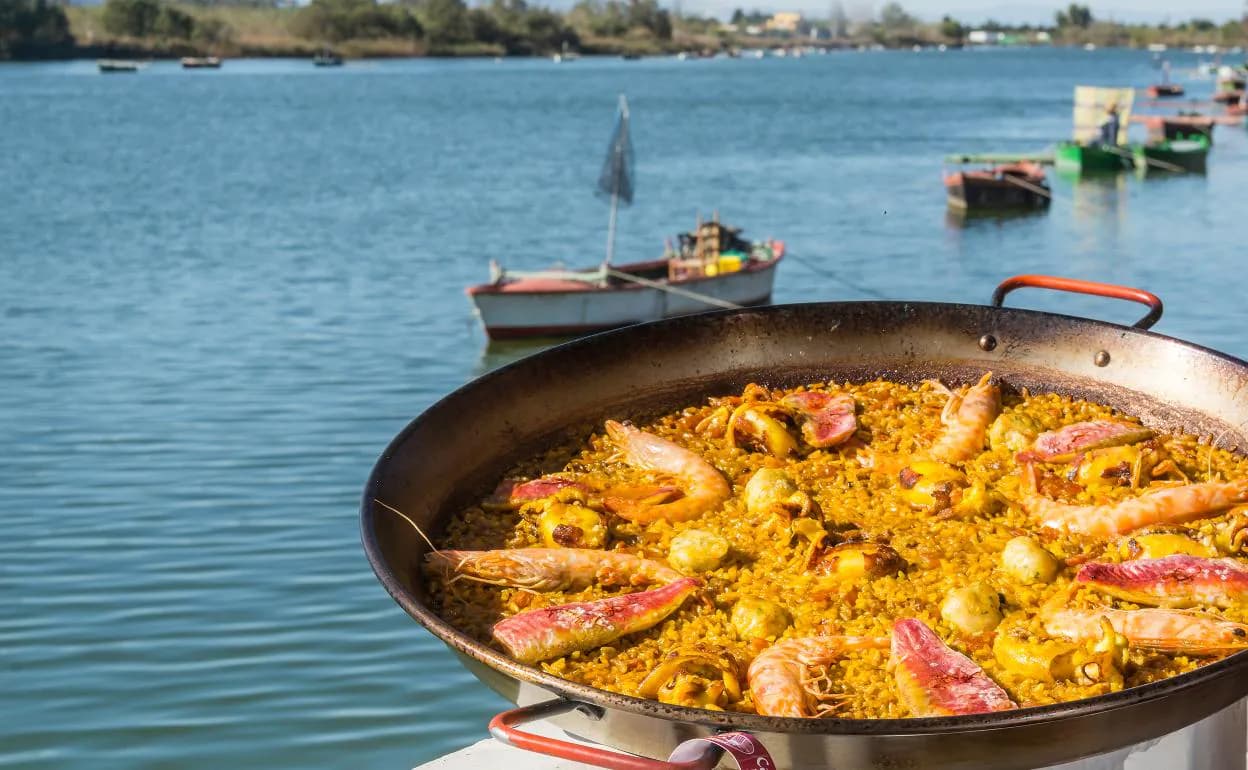
This time, there is no need to indicate the city from which this rice originates because it proudly announces its origin in its name. Paella de Cullera is a paella closely linked to the sea, notable for its use of the ingredient figatell, made from the meat of the scorpionfish.
We recommend the restaurant El Raco de Meliana, winner of the latest edition of the Paella de Cullera contest. We also highlight other winners such as the restaurant Casa Granero in Sierra. In Cullera, it is also worth trying it at the restaurant Casa Salvador, whose founder, Salvador Gasco, left his recipe for paella de Cullera as a legacy and a recipe of local products from the Bay of Cullera.
This product, also known as fardel, can be described as a meatball, in this case, we use fish meat and season it with salt, pepper, and parsley, wrapping it all with caul fat, which is a fatty membrane that holds the intestines and is found in the abdominal cavity of the fish.
Apart from this special ingredient, we use prawns, cuttlefish, red mullet, grated tomato, oil, water, salt, saffron, and sweet paprika in the preparation of this rice.
Valldigna paella

It is typical to add additional ingredients to traditional dishes in search of new flavors and delicious combinations. We all like to experiment and perhaps in the process, we may even discover a new recipe that will become a new classic. Well, in the region of Safor, they are ahead with their addiction to paella recipes.
We recommend the restaurants Alzimar and Aires del Sur, both located in the Valldigna area.
Most of the main ingredients are similar to the traditional Valencian paella, but they decide to put a twist on the paella by introducing the additional ingredients of red pepper and meatballs, both local ingredients from the area.
Rice with serranas, rabbit and snails - Pinoso

A traditional rice dish typical of the interior of the province of Alicante, it can be found in other towns such as Algueña, Monóvar, La Romana, etc. But we emphasize Pinoso, where it is made in a particular way: with vine shoot fire.
Unfortunately, the restaurant Casa Paco, an icon of this rice, closed in March of this year and is not expected to reopen. The successor to this great establishment could be the restaurant Alfonso Mira, and you can also try the delicious rice at restaurants such as Restaurante Alfonso, Restaurante Casa Elias, or La Teja Azul (1 Michelin star).
Vine shoots are the long branches where grapes hang, which will be used to make wine. These branches, once dried, are thin and long, their fire is intense but lasts less, a disadvantage easily overcome by giving rice and meats a unique aroma and flavor.
In addition to this special fire, rabbit and snail rice is prepared with red pepper, garlic, rice, rabbit, saffron, sweet paprika, grated tomato, oil, salt, water, and of course, snails, usually using the variety known as vaquetes or serrans snails.
Crusted Rice - Elche/Oriuela

Who doesn't like surprise meals where you discover what the dish is made of when you poke or bite into it? In the region of Alicante, in the towns of Orihuela, Callosa de Segura, Pego, but especially in this case in Elche, its inhabitants love to break the egg crust of this recipe and discover underneath a delicious rice to combine and savor.
We recommend the restaurant Cachito, located in Elche, where the Elche-born Noelia Pascual, winner of the 4th edition of the World Paella Day Cup, cooks the authentic rice with crust made in a wood-fired oven.
This crust is prepared with beaten egg, which is included at the end of the rice preparation when the broth has reduced, placing the casserole in the oven, which will make the egg rise and form this soft and fluffy "crust."
Beyond its egg crust, this rice usually includes white and red sausages, black pudding, crushed tomato, saffron, rice, rabbit or chicken, meat broth, chickpeas, oil, and salt.
Vigil Rice – Vega Baja del Segura/
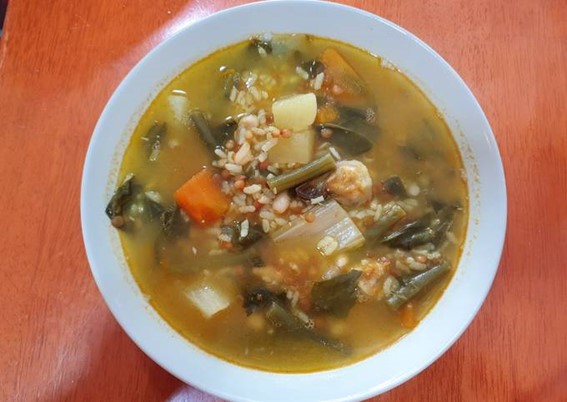
Although the name might imply otherwise, this rice won't keep you much more awake, but I can tell you that this vegetarian rice, typical of Lent and Holy Week in the Valencian Community, especially in Vega Baja del Segura, is delicious and requires very few ingredients.
We recommend the restaurant Vermut, winner of the Vigil Rice Contest in the taverns of Valldigna. Also noteworthy is the restaurant Amadeus, on Xeraco Beach, winner of the contest in 2019.
The name of this rice comes from the aforementioned Lent, as it used to be prepared by mothers and grandmothers during these times, "watching" that no meat was eaten at home. Another popular name for this dish is arroz de los tres puñados (rice of the three handfuls), as to prepare it, you only need three handfuls of each ingredient.
Since it is a meatless rice, the ingredients of this recipe usually vary slightly according to personal taste, but it mainly includes lentils, beans, potatoes, broad beans, grated tomato, artichokes, garlic cloves, chard, turnip, sweet paprika, salt, and water.
Rice with Beans and Turnips - Huerta del norte

While the rest of the world awaits winter for its festivities and Santa Claus gifts, the people of the Valencian Community look forward to the cold to start preparing pots and cauldrons filled with rice with beans and turnips. Sometimes, we don’t even wait for winter.
We recommend the restaurant Sequial 2.0 in Sueca, winner of the 4th rice with beans and turnips contest in Catadau in 2023. Also noteworthy is the restaurant Bon Estar in Valencia, winner of the contest in 2019. In the Huerta Nord area, you can find the restaurant El Raco de Meliana, which has won, among others, the first prize in the Cullera paella contest.
Also known as olla de fesols i naps or caldero de fesols i naps, this is possibly one of the most traditional dishes in villages, commonly found in their local festivities.
Its origins can be traced to the Northern Huerta, although nowadays you can find this hot and delicious dish almost anywhere in the Valencian Community.
To prepare this dish in a pot or cauldron, you need to include pig’s ear, snout, corbet, trotters, pork knuckle, black pudding, cardoon, turnip, white beans, rice, water, saffron, oil, and salt.
Rice with anchovies and spinach - Alicante

Near the coast and the beach, it is more than normal that people want to put the fruits of the sea on their tables, and in the city of Alicante, as well as in other nearby towns such as Callosa and Villajoyosa, you cannot miss the boquerón, even if it is in a rice dish, or in this case, especially in this rice dish.
We recommend the restaurants El Nautic, in Villajoyosa, and the restaurant Posada del Mar.
The anchovy is a blue fish found in abundance in the Mediterranean Sea, small in size, it can be found in a large number of recipes and supermarkets, either fresh from the sea or canned.
For this Mediterranean recipe, we need rice, anchovies, spinach, water, olive oil, salt, garlic cloves and salmorreta, a preparation used in rice dishes that is prepared with garlic cloves, tomato, ñora and oil.
Translated with DeepL.com (free version)
Route of Rice and Paellas: Spain
Tomato Rice - Andalucía

Tomato rice is a traditional Andalusian rice dish whose name deceives those unfamiliar with the recipe. We are not talking about white rice with tomato sauce on top, no sir.
We recommend the restaurant El Carranc and the restaurant El Riff.
Similar to how a paella is made, this dish is prepared with a sofrito of crushed tomato, onion, and green pepper, then water or broth is added, followed by the rice, which is left to absorb almost all the broth in the pot.
Some recipes for this dish also include additional ingredients, such as potatoes, egg, or garlic, and a teaspoon of sugar during the sofrito if the tomato tastes a bit strong.
Aragonese Rice – Aragón
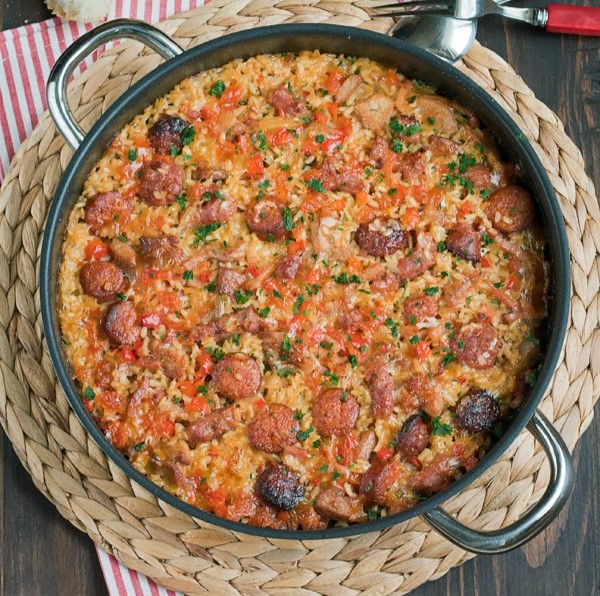
Far from the sea, it’s expected that, in search of a rice recipe using local ingredients, the people of Aragón would turn to the land, and here we find the meat used in this classic rice dish.
We recommend the restaurant La Capineta (1 Michelin star) in Aragón.
Longanizas, bacon, sausage, pork, and for some, peas are indispensable; this recipe includes all the land products found in Aragón.
It’s true that not all varieties of this recipe include all these ingredients; depending on the area of Aragón, you might miss some meats or find substitutions like meatballs.
Rice Pudding – Asturias

Sweet and delicious, it’s rare to find a Spanish restaurant or bar that doesn’t have this rice recipe as one of its desserts after a good meal. Even rarer is hearing someone not say that the best rice pudding in Spain is found in Asturias.
Due to it being a dessert, it can be a bit more difficult to recommend a restaurant, but we recommend La Casa Vicente and the restaurant Casa Gerardo.
The peculiarity of Asturian rice pudding is the final touch: a layer of caramelized sugar, which combined with its creamy texture, results in a sweet dessert appreciated by all who taste it.
This sweet rice dessert is prepared with rice, milk, ground cinnamon, lemon or orange peels, and sugar.
Arroz brut – Mallorca

Probably one of the most traditional rice dishes in Mallorca, it is a spoon dish made with seasonal garden ingredients and game meat.
We recommend the restaurant Ca'l Domini and Celler de Petra.
Don’t be misled by the name; the rice isn’t truly dirty. The name comes from the color of the broth, which usually turns quite murky due to the “picada” added at the end of its preparation, so at first glance, it seems “dirty.”
Typically, you can find poultry, rabbit, and pork meat, combined with vegetables like peas, green beans, onion, crushed tomato, and mushrooms, but the one thing that cannot be missed is the sobrasada, usually chopped with other spices and liver to make the picada added at the end of its preparation.
Yellow Rice - Canary Islands
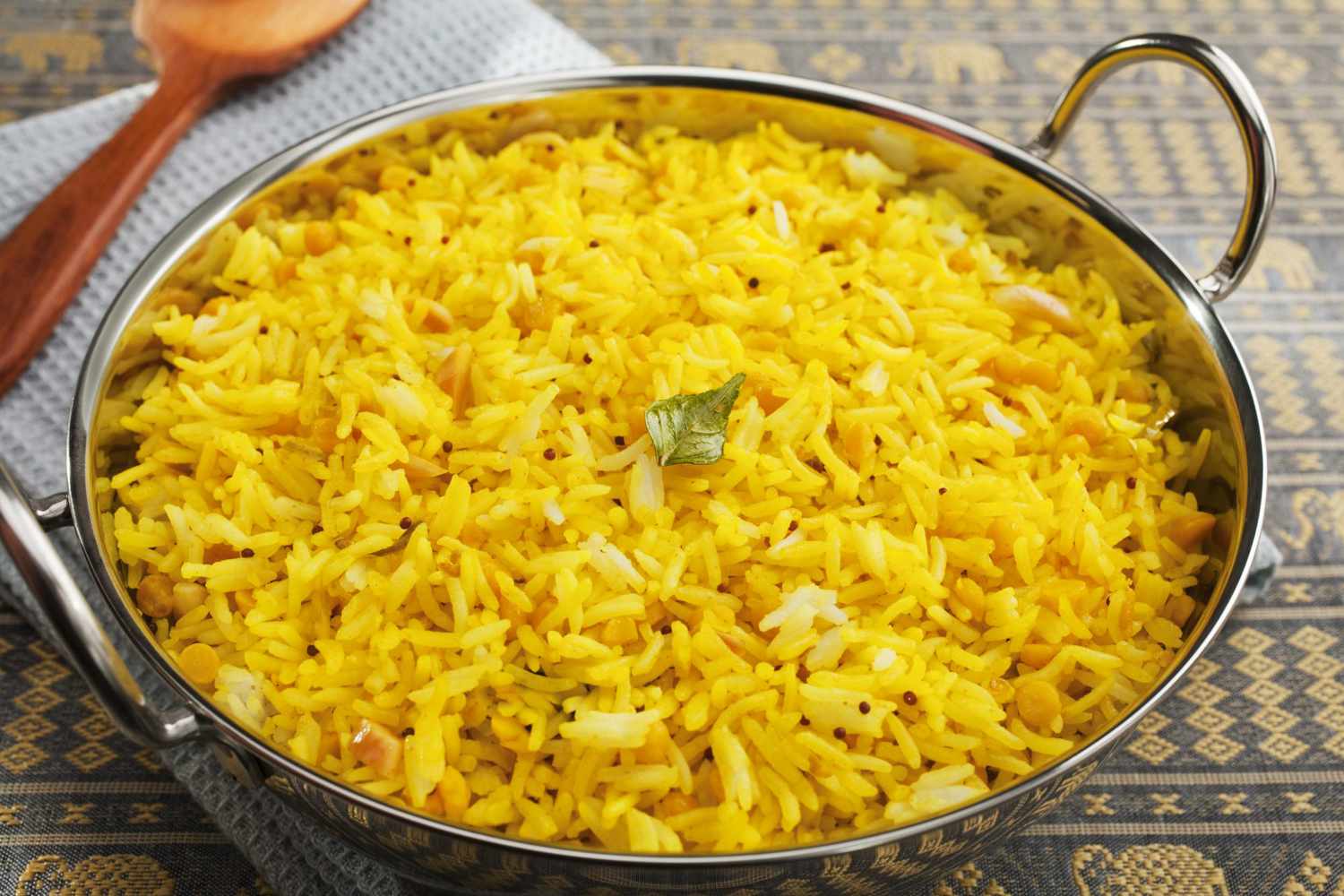
If you’re looking to try a more tropical rice recipe, we invite you to come to the Canary Islands to try yellow rice, a rice dish made in a special pot called caldero chato.
We recommend the restaurant La Guachiche.
The recipe is usually made with multiple types of meat using vegetables like green and red peppers, onion, garlic, tomato, and peas, not forgetting the olives at the end of its preparation. Depending on the area, you might find variations, such as those made with fish.
Zamoran Rice - Castilla y León

A humble dish of peasant origin, this traditional rice recipe is found in the Castilla y León region, in the province of Zamora, where the pork products from the slaughter are put to good use, resulting in a flavorful rice dish.
We recommend the restaurant Capitol, located in the same province of Zamora.
Prepared as a creamy rice, it is usually cooked with pancetta, chorizo, minced meat, fresh sausages, or even ham cubes. It is a rice full of energy and flavor, preferably consumed in winter or on cold days to replenish strength and warm the body.
Fideua - Gandía
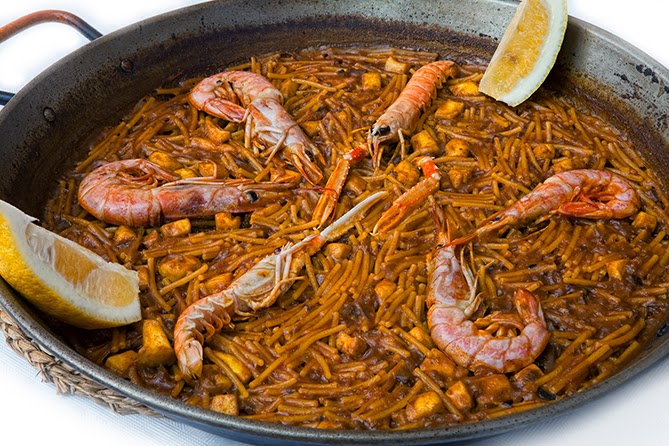
Admitimos que puede ser un poco de trampa incluir la fideua en una ruta de arroces, pero creemos que este plato tradicional de Gandía, disfrutado por toda España, se merece su propio sitio en esta lista.
Nosotros recomendamos el restaurante de Golla Gallery.
Elaborado con fideos en vez de arroz, la fideua es un plato de marisco muy habitual en las zonas de costa y playa, pero su origen se remonta a la provincia de Gandía.
Cuenta la leyenda que este plato de marisco se originó en uno de los barcos de pesca, donde el patrón, muy aficionado al arroz, solía comerse la ración de arroz a banda que solía preparar el cocinero. Para arreglar este entuerto, el cocinero decidió cambiar el arroz por fideos, con el objetivo de que, al no ser arroz, le resultase el plato menos apetitoso al patrón y todos pudiesen comer su ración. Cuando volvieron a tierra, la historia y la receta comenzó a difundirse entre los bares y las personas y con el tiempo, el plato se volvió un clásico de la cocina de Gandía.
Arroz caldero – Murcia

Also known as caldero del Mar Menor, this traditional rice recipe from Murcia was commonly made by the local fishermen, who cooked in cauldrons the fish that weren’t profitable enough to sell at the markets.
We recommend the restaurant La Bocana del Puerto and Cabo de Palos, both located in Murcia.
In this rice, the star ingredients are the ñora and, of course, the fish, for which multiple species from the Mar Menor are accepted.
Curiously, when served at the table, the rice and fish are separated, serving the rice on one side with a bowl of aioli to mix with the rice, and the fish on a platter, from which you can take pieces or portions to eat with the rice or mix with an additional sauce, usually made from the reduced broth from this recipe's preparation.
Perol cordobés – Cordoba
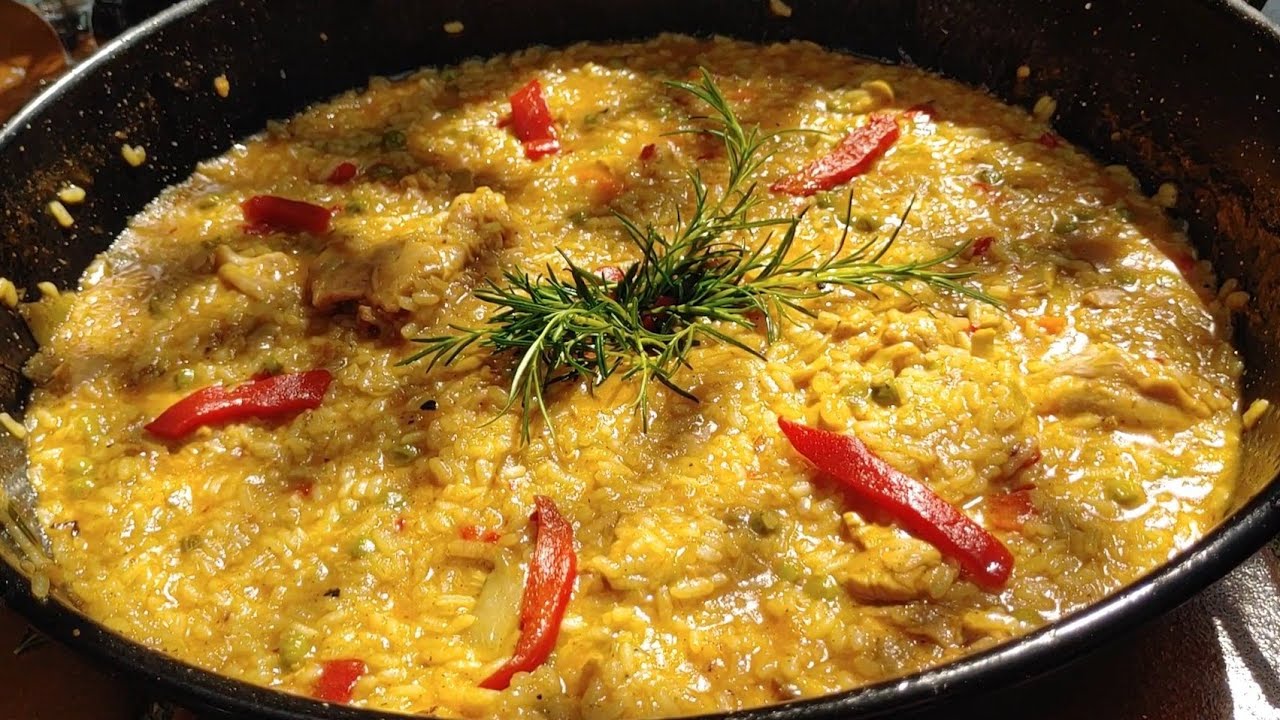
Warm and with all the ingredients from the countryside, this traditional Cordoban rice recipe is rarely not used as an excuse to gather the family around this dish during the feast of San Rafael Archangel.
We recommend the restaurants Casa Bravo, El Choto, and El Barón, all located in Cordoba.
This perol is made with rice, green and red peppers, onion, garlic cloves, tomatoes, rice, saffron, and meat, which is usually chicken, pork, or rabbit, depending on the diners' preferences.
Rice with Lobster – Galicia

“If you want an elegant dinner, buy a lobster,” this phrase from a certain Spanish series is something many of us have heard, but in Galicia, they are years ahead, as for them, this is a rice dish that cannot be missing from the table, be it lunch or dinner.
We recommend the restaurant A Cofradia, located in Galicia.
Also known as arroz de lubrigante, the recipe includes rice, lobster, red pepper, onion, crushed tomato, garlic, oil, saffron, sweet paprika, fish broth, and salt.
Squid in its Ink with White Rice – País Vasco
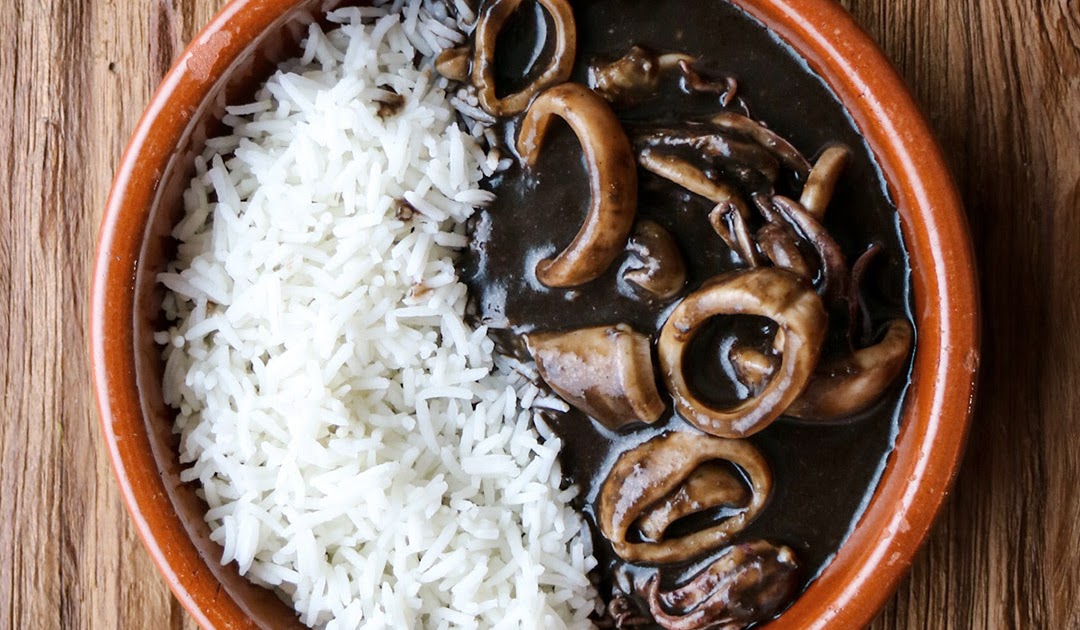
Squid in its ink is a seafood dish that is never missing from bars and restaurants in the Basque Country, especially in summer, which is when squid is at its peak. We don’t know which Basque person came up with combining this dish with white rice, but we can confirm it was a splendid idea.
We recommend the restaurant Bon Donosti.
The main trick to achieving this dish perfectly is to use medium-sized squid, not too large or small, making it easier to distribute portions and combine with the rice.
The ingredients used for this Basque rice dish are squid, rice, onion, garlic, green pepper, squid ink, oil, salt, crushed tomato, and white wine.
Rice with Hare – Castilla de la mancha

A homemade Castilian meal made with the reward of a good day of hunting, or more likely for most of us, by going to the butcher at the supermarket. But one thing doesn’t take away from the other; this typical Castilian rice dish is a reward for our palate.
We recommend the restaurant Villarrobledo.
Keep in mind that if you are not hunters, hare can be somewhat difficult to find; it is advisable to ask the butchers to try to get it, as it may sometimes need to be ordered if not commonly sold.
To cook this rice with hare, you will need hare, rice, red pepper, grated tomato, garlic, white wine, salt, water, and olive oil.
Conclusion
We hope our tour through the cities and towns of Spain has introduced you to some new rice recipes you didn’t know about. Similarly, if there is any traditional rice recipe we haven’t included, let us know, the more we know, the more we can try and enjoy. We hope you enjoy all these recipes, rice lovers!

